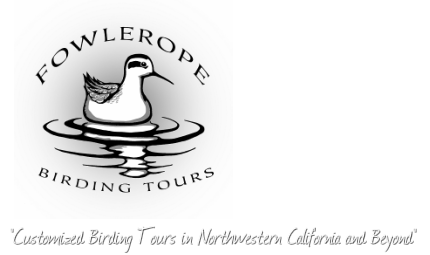 The group.
The group. Yesterday, 8 June, I led my annual Horse Mountain field trip for Redwood Region Audubon Society. The Horse Mountain region is the closest high elevation location from the Humboldt Bay Region and only takes about 1/2 hour to 40 minutes for one to reach the area going east on Highway 299. There's a nice mix of habitats up there with serpentine Jeffrey pine forests, some regenerating clearcuts, high elevation meadows, oak woodlands, and at the highest elevations along the route, white fir forests. The actual Horse Mountain is an official "botanical area" due to the coastal Jefferey pine, western white pine, and Port-orford Cedar communities that are found within its' 1,100 acres. With this large diversity of habitats comes a great diversity of bird species. If you want to see montane species like Sooty Grouse, Mountain Quail (both mostly heard only, though). White-headed Woodpecker, Hammond's and Dusky Flycatchers, Mountain Chickadee, Townsend's Solitaire, Hermit Warbler, Green-tailed Towhee, Thick-billed Fox Sparrow, and others, then the Horse Mountain area is THE place to go in Humboldt County for these species.




 RSS Feed
RSS Feed

